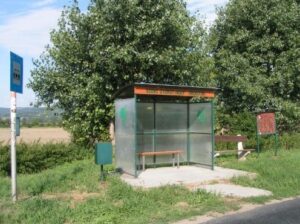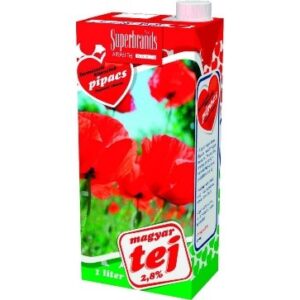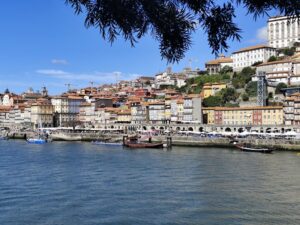In English:
Last time I tried to present you some random similarities between Hungary and Estonia I’ve experienced since I was here. This time I would like to show you some random differences that were unexpected or incomprehensible to me at first – and have been ever since…
- My collegaues started to talk about reflectors on a meeting in October. I was a little confused and listened to the coversation with eyes wide open. They were discussing which tree to place the reflectors on so that it would be recognizable and people could pick one if they don’t have any. After the meeting I stood in the office window with Kristina looking for the perfect tree for that purpose. My confusion increased because I still didn’t understand why they want to put big reflectors on the trees and light the building during winter. Then I became enlightened – or let’s say they enlightened me. The reflector is the small reflective prism worn on people’s coats ad bags to be more recognizable by the drivers in the dark. Actually my friends asked me the same thing I had done: why do Estonians not use more street lighting? I still don’t know the right answer to that. But I must admit that although in Hungary almost every single pylon has a lighting in every settlement, it might not be a bad idea to use reflectors to avoid accidents.
- Bus station means a little house (or pavilion) in all Hungarian town and villages where you can retreat in the harsh weather. Besides that there is a big blue board which indicates the potential passengers. Then before you arrive at your destination you better press the stop button otherwise the driver won’t stop. Not to mention those who put their bags in the seat next to them or sit in the external seats are considered to be indecent because this way new boarders can not sit down. Or even so if they don’t give their seats to the elderly. How does the long distance transport work in Estonia? I am still not sure about that. 😀 Sometimes I feel bus stations are just random places in the middle of nowhere. And passengers prefer to stand instead of sitting down next to a stranger. Well, I could somehow get used to that in Hungary too.
- In Hungary most workplaces start at 8 a.m.– except factories where morning shift starts at 6 a.m. So you can see it is necessary to get up early enough especially for those who work far away from their home. Let’s take me as an example. I had to get up at 5:40 every morning to get to the museum by 8:30. I don’t know how the situation is with you but I am unable to eat anything before 8. Because of this – if I didn’t want to prepare anything for breakfast – it was really helpful to go to a shop to buy something while I was walking to the bus station. Also when I used to live in Budapest I could do the shopping before work. In Estonia I don’t have any chance to do the same because most of the groceries – to my great surprise – open at 9 a.m.
- I love to cook and bake what people close to me enjoy the most – however it is a matter of point of view, according to my flatmate my only goal is to make her fat. 😀 And if someone asks for a recipe, I am happy to share it with others. One of my colleauges asked me for the recipe of the iconic lángos* I tried my very best to give her the perfect measurements – in dekagrams. Since most of Hungarian recipes are written in this form. A couple of days later the surprise came: Laura told me that she and her mother was starring at the recipe for minutes because they didn’t know what this quantity meant. It is not known in Estonia.
- As a Hungarian I couldn’t be happier with the wide range of milk products. If I would like to compare myself to the iconic story book character – Artúr Gombóc** – I could say that I love everything what’s made of milk: the cottage cheese roll, the sweat cream cheese, the milk rice, the greek yoghurt, the sour cream, the sweat and salty cottage cheese and of course, the milk. Yes, but who wants to go constantly to the store to buy milk since it has a very short expiration date. On my first days here I have searched for long-life milk in several stores, unsuccessfully. But what is long-life milk? It is milk processed at utra-high temperature*** I am not sure this is the healthiest thing but it lasts for 5-6 months so you only need to go for it to the pantry or the basement. Oh and unopened it can be stored at room temperature.
*Lángos is a deap fried flat bread which is eaten fresh and warm, topped with sour cream and grated cheese or doused with garlic water.
** He loved all kinds and shapes of chocolate. His character was created by István Csukás who is a famous Hungarian author died 4 years ago.
***UHT = Ultra-high-temperature processed milk.
In Estonian:
Eelmises artiklis esitasin teile juhuslikke sarnasusi Ungari ja Eesti vahel, mida siin viibides kogenud olen. Seekord aga tahaksin teile tutvustada hoopis erinevusi, mis olid mulle algselt ootamatud või arusaamatud – ja tegelikult on siiani…

Helkurid on võõras asi
Minu kolleegid hakkasid rääkima helkuritest oktoobri alguses. Olin sellest veidi segaduses ja kuulasin seda jutuajamist silmad pärani. Nad arutlesid, millisele puule helkurid asetada, et need oleksid nähtavad ning et inimesed saaksid neid võtta, kui neil endal ei ole. Pärast koosolekut vaatasime Kristinaga kabineti aknast välja ja valisime sobivat puud. Minu segadus suurenes – ma ei saanud ikka veel aru, miks nad tahavad talvel panna suuri helkureid puude külge, et hoonet valgustada. Siis sain aga hoopis ise valgustatud. Õigemini, nemad valgustasid pigem mind. Helkur on tegelikult see väike helkiv prisma, mida inimesed kannavad oma mantlite või kottide küljes, et autojuhid neid pimedas paremini näeksid. Minu sõbrad küsisid minult sama, mida isegi enne olin mõelnud: miks eestlased ei kasuta rohkem tänavalgustust? Tegelikult ei tea ma siiani õiget vastust. Kuigi ma pean tunnistama, et ehkki Ungaris on igas asulas valgustus, paistab helkurite kasutamine hea variandina liiklusõnnetuste välitimiseks.
 Bussiga sõites käitutakse erinevalt
Bussiga sõites käitutakse erinevalt
Kõikjal Ungari linnades ja külades tähendab bussijaam väikest maja (või paviljoni), kuhu saab karmide ilmaolude puhul varjuda. Peale selle on seal suur sinine tahvel, mis näitab potentsiaalseid reisijaid. Enne sihtkohta jõudmist on parem vajutada „stopp” nuppu, sest vastasel juhul ei pruugi juht lihtsalt peatuda. Rääkimata neist, kes panevad koti enda kõrvale või istuvad välistele istmetele. Seda peetakse sündsusetuks, sest nii ei saa uued reisijad maha istuda. Või siis, kui nad ei anna oma kohta eakatele. Kuidas toimuvad pikad bussireisid Eestis? Ma ei ole selles veel kindel. 😀 Vahel tundub, nagu oleks siinsed bussijaamad juhuslikud kohad keset eikusagit ja reisijad eelistavad võõra inimesel kõrvale istumise asemel seista. Noh, ka Ungaris võiksin sellega kuidagimoodi ehk harjuda.
Ungarlased – hommikuinimesed? 
Ungaris algab töö enamasti kell kaheksa hommikul, välja arvatud tehastes, kus hommikune vahetus algab kell kuus. Niisiis on vaja tõusta päris vara, eriti neil, kes töötavad kodust kaugemal. Näiteks muuseumis töötades pidin ma igal hommikul ärkama kell 5.40, et olla 8.30 muuseumis. Ma ei tea, kuidas teiega, aga mina ei saa süüa enne kaheksat. Seetõttu oli väga tänuväärne, et ma sain minna enne bussile minemist poodi. Budapestis elades sain ma poodides käia juba enne oma tööpäeva algust. Eestis ei ole selleks aga mingit võimalust, sest minu üllatuseks avatakse enamik neist kell üheksa.
Segadus mõõtühikutega
 Mulle meeldib väga süüa teha ja küpsetada ning minu lähedastele meeldib see samuti. Välja arvatud mu korterikaaslane, kelle sõnul on mu ainus eesmärk teda paksuks ajada. 😀 Kui minult küsitakse retsepti, jagan seda suurima heameelega. Üks minu kolleegidest küsis minult kord ikoonilise lángose* retsepti. Ma püüdsin teha oma parima, et anda talle selleks täiuslikud mõõdud dekagrammides, kuna enamik Ungari retsepte on just sellisel kujul kirja pandud. Paar päeva hiljem tuli üllatus: Laura ütles mulle, et tema ja ta ema jõllitasid seda retsepti mitu minutit minuti, et aru saada, mida see kogus tähendada võiks. Eestis ei teata sellist retsepti kirjutamise viisi.
Mulle meeldib väga süüa teha ja küpsetada ning minu lähedastele meeldib see samuti. Välja arvatud mu korterikaaslane, kelle sõnul on mu ainus eesmärk teda paksuks ajada. 😀 Kui minult küsitakse retsepti, jagan seda suurima heameelega. Üks minu kolleegidest küsis minult kord ikoonilise lángose* retsepti. Ma püüdsin teha oma parima, et anda talle selleks täiuslikud mõõdud dekagrammides, kuna enamik Ungari retsepte on just sellisel kujul kirja pandud. Paar päeva hiljem tuli üllatus: Laura ütles mulle, et tema ja ta ema jõllitasid seda retsepti mitu minutit minuti, et aru saada, mida see kogus tähendada võiks. Eestis ei teata sellist retsepti kirjutamise viisi.
Eestist ülipiima ei saa 
Ungarlasena teeb mulle meeletult rõõmu siinne laialdane piimatoodete valik. Kui ma võrdleksin ennast ikoonilise juturaamatu tegelase Artur Gombociga** võiksin öelda, et mulle meeldib kõik, mis piimast koosneb: kodujuusturull, kreemjuust, piimariis, kreeka jogurt, hapukoor, soolane kodujuust ja muidugi ka piim. Aga kes tahaks seda pidevalt poest osta, kui säilivusaeg on nõnda lühike? Oma esimestel siinoldud päevadel otsisin päevi pikaajalisemalt kestvast piima, ilma eduta. Mis on pikaaealine piim? See on ülikõrgel temperatuuril töödeldud piim. Ma pole kindel, kas see just tervislik on, kuid kestab 5-6 kuud, nii et saate selle viia sahvrisse või keldrisse. Ning avamata kujul saab seda hoida toatemperatuuril.
*Langos on praetud lame leib, mida süüakse tavaliselt värskelt ja soojalt, hapukoore ja riivitud juustuga või küüslauguveega.
**Ta armastas igasugust ja igasuguse kujuga šokolaadi. Tema tegelaskuju lõi Istvan Csukas, kes oli kuulus Unagri kirjalik. Csukas suri neli aastat tagasi.
Beáta Pravetz
Tartu Noorsootöö Keskuse Euroopa Solidaarsuskorpuse vabatahtlik







